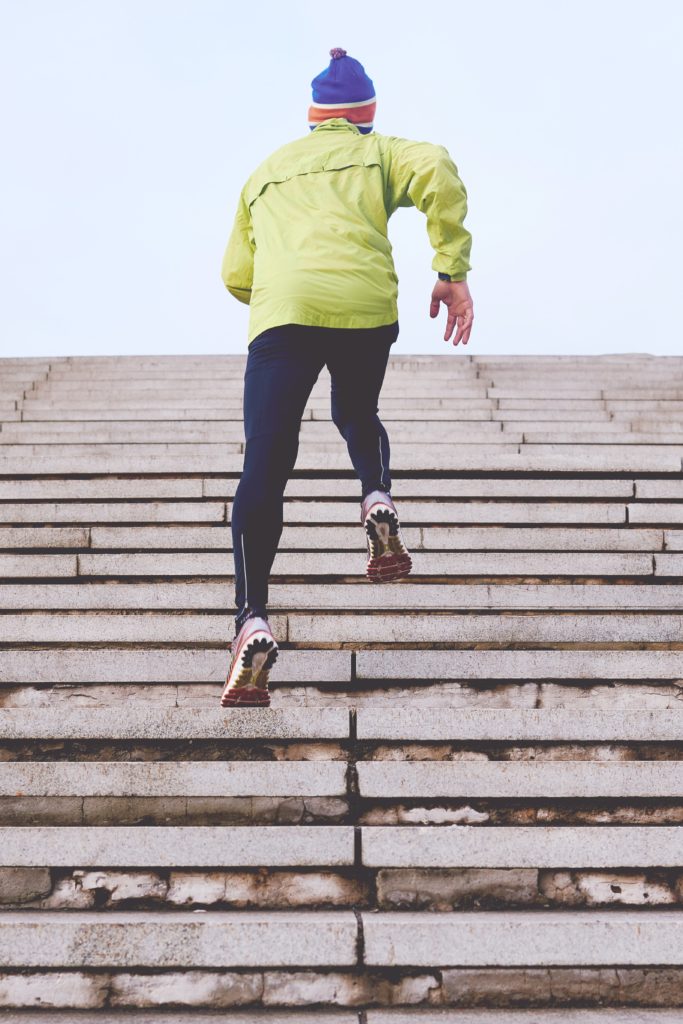Author: Helen Gaunt
Before every run or workout, we all know it’s important to warm up. But what’s the science behind it and what is the recommended way to prepare our body to its best advantage? Have you heard of the RAMP approach? This is a progressive, dynamic warm up whereby you Raise (the heart rate), Activate (the muscles), Mobilise (the joints) and Potentiate (the body’s neuromuscular system).
By spending 10-15 mins preparing the body before you run, you will get the best out of it and help guard against injury. And it not only prepares the body but also helps get the mind in gear for the task ahead.
A RAMP warm up works through some dynamic stretches and multidirectional movements, before progressing to more explosive activation exercises. Go-to drills for runners include walking lunges, walking hamstring stretches and multidirectional movements like alternating side squats, etc. These multidirectional movements help sharpen up foot speed, lower-body power and coordination, so you’re ready to move fast.
More active drills would come next such as high knee pick-ups, heel pick-ups, high skips, long skips, sideways gallops and karaokes. A RAMP warm up would typically finish with short bursts of strides / accelerations, where you over-exaggerate your running for 20-30 seconds, building up the pace across 4-5 efforts. By drilling down and focusing on your running movement pattern in a progressive warm up like this, you’ll hit go with your neuromuscular system fully switched on!
The RAMP warm up can be adapted depending on the intensity of your planned activity. If you’re just going out for a steady run, begin with some of the dynamic warm up drills to loosen up, and then ease into your run with a few easy miles. If you’re preparing for an interval session or race, aim to arrive early and run a couple of steady miles to raise the heart rate followed by some drills and strides just before you start.
After training, it’s important to build in time for a proper cool down. We know we should be doing this, but what’s the best approach and what’s the science to support it? Well, it helps the body to reset – by returning the heart rate to its normal level, bringing your temperature back down, and flushing out any lactic acid build up. If you’re out for a steady run, try finishing with the last 5 minutes at a gentler pace. After a hard session or race, a longer cool down is needed – you’re ideally looking at 10-15 minutes of running at an easier pace.
Once you’ve finished your run, always take the time to stretch. By working through a series of 15-second static stretches, you will reduce tightness in your muscles and work on your flexibility, which improves over time with regular attention. Stretching not only prepares the body for its next workout by resetting, but it helps reduce the risk of injury by loosening up any areas of tension. You can target any problem areas with longer developmental stretches of 45 seconds, where you extend the stretch and relax into it every 15 seconds for a period of 45 seconds.
Stretch straight after exercising when your muscles are warm and more elastic. Breathe deeply and regularly and aim to stretch to the point of feeling tightness or slight discomfort. Target areas for runners are: quads, hamstrings, ITB, calfs (gastrocnemius at the top and soleus at the base), glutes/piriformis, hip flexors and lower back. Other effective ways to treat areas of muscular tension include foam rollers, massage guns or sports massage – remember that recovery is all-important for sustaining the training!
